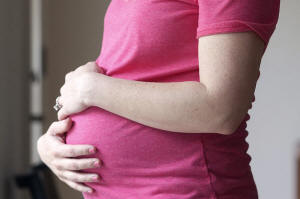US births rose last year, but experts don't see it as a trend
[March 19, 2025]
By MIKE STOBBE
NEW YORK (AP) — U.S. births rose slightly last year, but experts don't
see it as evidence of reversing a long-term decline.
A little over 3.6 million births were reported for 2024, according to
Centers for Disease Control and Prevention preliminary data. That's
22,250 more than the final tally of 2023 U.S. births, which was released
Tuesday.
The 2024 total is likely to grow at least a little when the numbers are
finalized, but another set of preliminary data shows overall birth rates
rose only for one group of people: Hispanic women.
The rise — less than 1% — may just be a small fluctuation in the middle
of a broader trend, said Hans-Peter Kohler, a University of Pennsylvania
sociologist who studies family demographics.
“I’d be hesitant to read much into the 2023-24 increase, and certainly
not as an indication of a reversal of the trend towards lower or
declining U.S. fertility,” Kohler said, adding that more analysis is
needed to understand any changes that happened in birth patterns last
year.
U.S. births and birth rates have been falling for years. They dropped
most years after the 2008-09 recession, aside from a 2014 uptick. They
also dropped in 2020, the first year of the COVID-19 pandemic, then rose
for two straight years after that, an increase experts partly attributed
to pregnancies put off amid the pandemic.
A 2% drop in 2023 put U.S. births at fewer than 3.6 million, the lowest
one-year tally since 1979. Vermont had the lowest birth rate that year,
and Utah had the highest, according to Tuesday's 86-page report on 2023
birth data.

[to top of second column]
|

A pregnant woman stands for a portrait in Dallas, Thursday, May 18,
2023. (AP Photo/LM Otero, File)
 The report, based on a review of all
the birth certificates filed that year, shows the average age of
mothers at first birth has continued to rise, hitting 27 1/2 years.
It was 21 1/2 in the early 1970s, before beginning a steady climb.
Birth rates have long been falling for teenagers and younger women,
but were rising for women in their 30s and 40s — a reflection of
women pursuing education and careers before trying to start
families, experts say. But in 2023, birth rates fell for women in
almost all age groups, include women in their early 40s.
Preliminary birth rate data for 2024 shows a continued decrease
among teenagers and women in their early 20s. But it also showed
increases for women in their late 20s, due entirely to a rise in
births to Hispanic women. Increases also were seen for women in
their 30s, due to rises among Hispanic and white women, and those in
their 40s, due to rises among white women.
Immigrant moms likely drove the increase in Hispanic births, and a
solid economy in 2024 also may have helped buoy the numbers, said
Dr. John Santelli, a Columbia University expert on family health.
“But I think the changes are small. ... I don’t think it's going to
change the long-term trajectories," Santelli said.
All contents © copyright 2025 Associated Press. All rights reserved |